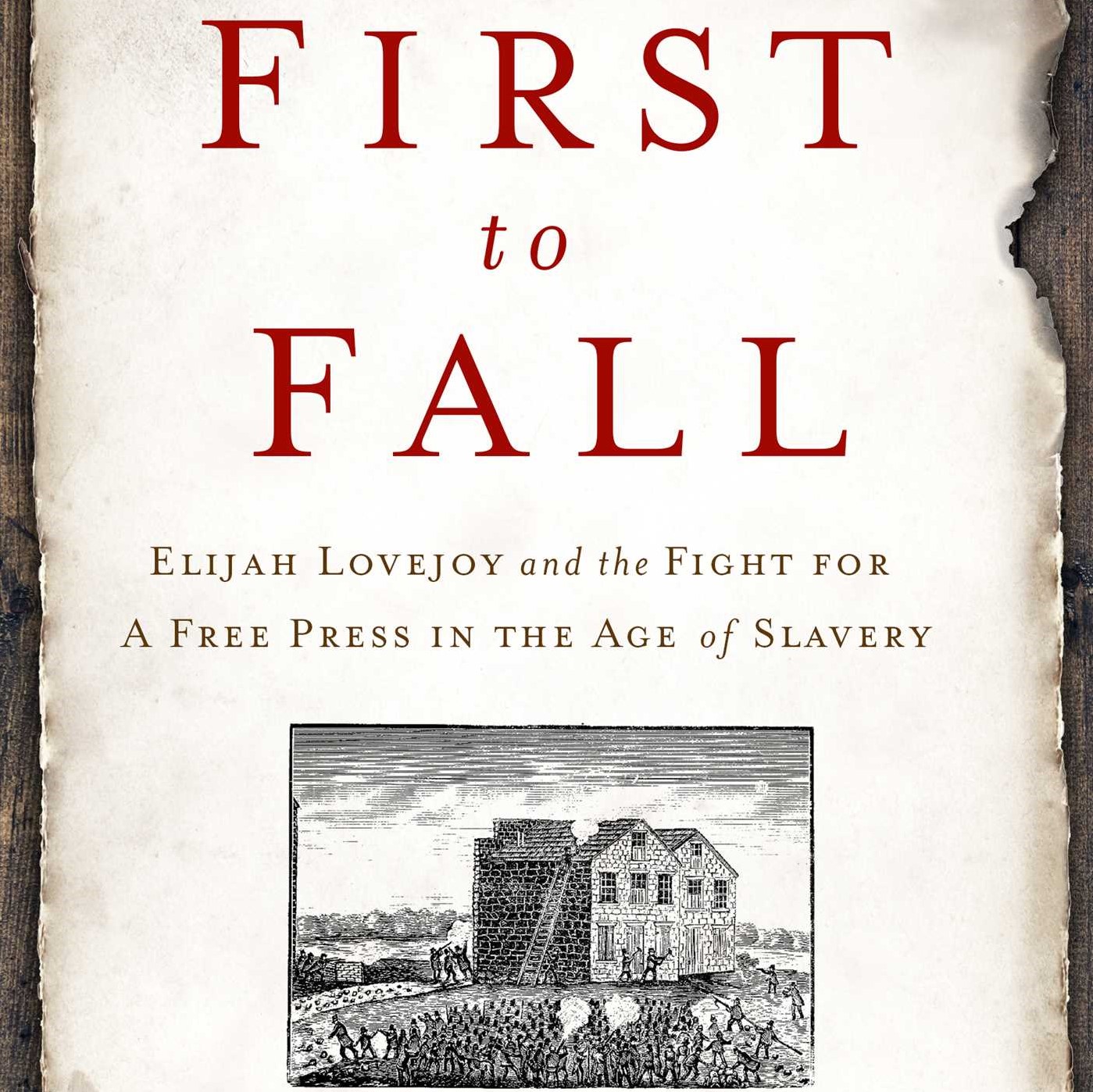2022-04 | Download PDF
Ellingwood, Ken. First to Fall: Elijah Lovejoy and the Fight for a Free Press in the Age of Slavery (New York: Pegasus Books, 2021), 400 pp., $27.95 (hardback). Reviewed by Thomas Terry, Utah State University, thomas.terry@usu.edu.
Elijah Lovejoy is unknown to most working journalists, many historians, and virtually all students. Award-winning journalist Ken Ellingwood looks to remedy this in First to Fall: Elijah Lovejoy and the Fight for a Free Press in the Age of Slavery by situating Lovejoy in the first rank of American journalists. Ellingwood’s work belongs in an undergraduate media history class alongside the biographies of other journalists who suffered far less. Lovejoy’s story demonstrates the opportunities and costs of journalism in the face of outrage and violence sparked by media coverage. The price continues to be paid: Don Bolles of the Arizona Republic killed in a 1976 car-bombing, Chauncey Bailey of the Oakland Post gunned down in 2007, and four journalists and a staff member murdered in the Capital Gazette’s Baltimore offices in 2018. Lovejoy was only the first, a man Ellingwood came to admire as an “exemplar of bravery, if not of tact,” pursuing a “righteous cause” while at times “bent on martyrdom” (6).
No other controversy in American history approaches the divisiveness of slavery, and Ellingwood provides a powerful feel for that era: the all-consuming hatred and the relentless drumbeat of fury in the decades leading up to secession over an issue that had no possibility of resolution short of the capitulation. It is the sacrifice of Lovejoy–and 750,000 soldiers who died–that allows the U.S. to reckon with itself and the racial injustices that remain and address the lingering perversions of America’s original sin. Ellingwood’s book is of another time, but profoundly of ours as well.
Lovejoy was fired by an incendiary Christianity that called him to the pulpit of the Upper Alton Presbyterian Church and the pulpit of his newspaper, the Observer, originally based in St. Louis. Lovejoy took on just about anyone who violated his sense of religious and moral rectitude but reserved his most fiery language for slavery.Civic leaders tried to tone down his rhetoric or ignore him, the publishers of the Observer tried to muzzle him, and opponents attempted to intimidate him with death threats and vandalism. A rising tide of anger gripped the area, driven by irreconcilable differences and Lovejoy’s refusal to relent. Eventually, he decamped for Alton upriver along the Mississippi River in Illinois. But strife followed him. On the night of November 6-7, 1837, Lovejoy and friends were protecting a printing press in a grocery warehouse when it was besieged by a 200-strong mob, rage fueled by liquor. Both sides exchanged gunfire, and the mob began to set fire to the roof. Along with a friend, Lovejoy tried to sneak out to deal with the arsonist and was immediately ambushed by two men. As his body was carried away from the warehouse later, some bystanders jeered.
Alton and St. Louis newspapers were unsympathetic and downplayed the murder or blamed abolitionists. Nationwide, abolitionists were split over Lovejoy’s actions with many–William Lloyd Garrison prominently–sharply criticizing him for violating the movement’s nonresistance policy by defending himself. Similarly, Lovejoy’s wife Celia was blamed for fending off men breaking into her house. Two subsequent trials of the rioters were travesties, and the resulting not guilty verdicts were not unexpected.
The characters in the drama of the last months of Lovejoy’s life are intertwined with wider American history. One with him in Alton was Edward Beecher, who wrote a book about the siege and whose sister was Harriet Beecher Stowe, author of Uncle Tom’s Cabin. The mayor of Alton, John Krum, who tried to negotiate a settlement during the attack, later moved to Missouri and in 1848 as a circuit judge was the first to hear the Dred Scott case. Galvanized by Lovejoy’s murder, John Brown started down the path to Harpers Ferry by consecrating his life to the elimination of slavery. Three months after Lovejoy’s murder, the 28-year-old Abraham Lincoln referred to Lovejoy–though not by name–in his famous Lyceum Address in Springfield decrying the violent mobs that threatened to undermine the country. It is appropriate that Ellingwood, a former Los Angeles Times reporter, wrote Lovejoy’s biography, possessing the nuance and the innate understanding of the reporter’s craft. In engaging, sometimes haunting, and often dispassionate prose, Ellingwood captures the terror of Lovejoy’s last hours and the malevolence of the mob. But the book is far more than that and captures Lovejoy’s life in detail. Relying on contemporary newspaper accounts and letters, supported by an impressive list of books published in the century after Lovejoy’s murder, this powerful biography captures the sentiments, anger, and violence that characterized the decades before the Civil War. The picture of Lovejoy that Ellingwood paints is of a driven man, haunted by personal feelings of inadequacy before God and yet focused on adding his voice and that of his weekly newspaper to a building crescendo to wash away slavery. Like many abolitionists of the time, he wrongly believed gradual and peaceful emancipation of slaves was inevitable once southerners became somehow enlightened. He was also anti-Catholic, as were other Protestants then, and his words to modern ears are appalling and quite jarring. Ellingwood scrupulously addresses Lovejoy’s hypocrisies. Lovejoy was buried in an unmarked grave that eventually became part of a path over which carts and horses passed. Dead at just 34, he left a wife and three children, one born after his murder, and a legacy that Ellingwood illuminates with skill and sensitivity.

